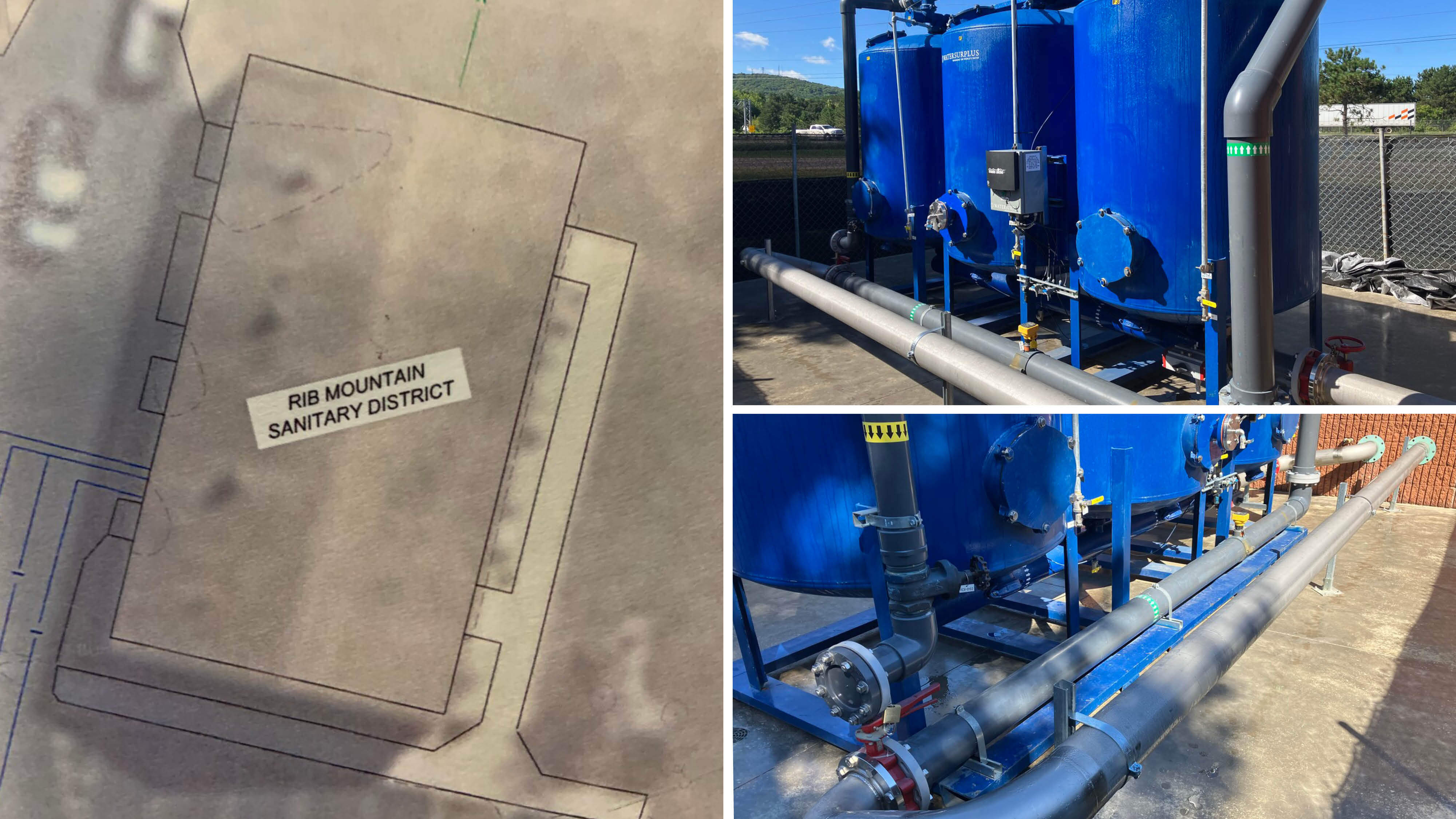Challenge
The Village of Rib Mountain relies on wells located in the sand and gravel aquifers of the Wisconsin River to supply their community with drinking water. For years, these wells have faced ongoing challenges with increasing manganese levels. Testing revealed that two of the four source wells exceeded both the Wisconsin Department of Natural Resources' (WDNR) secondary maximum contaminant level (SMCL) and the Department of Health Services' health advisory level (HAL) for manganese. These findings highlighted the need for an upgraded treatment solution as the existing system, installed in 1985, had become inefficient over time and was increasingly becoming incapable of meeting current water quality standards for Manganese.
Adding to the challenge, voluntary testing during the final design phase of the new treatment plant detected Per- and Polyfluoroalkyl Substances (PFAS) in Wells 1 and 2 at levels exceeding the health recommendations at the time. These "forever chemicals," known for their persistence in the environment and significant health risks, made it clear that a comprehensive water treatment strategy was essential. Removing PFAS quickly became a top priority for the village. However, at the time of detection, there were no Wisconsin DNR regulations mandating treatment – only recommendations based on health standards and EPA guidance. Wisconsin had not "codified" laws regulating the removal of PFAS from drinking water, so to ensure long-term compliance SEH needed to design the PFAS solution under the expectation that both the EPA and WDNR would eventually implement stringent regulations.

Solution
SEH proposed a comprehensive plan for a new water treatment plant to treat manganese, iron and remove PFAS from all of the wells. This plan features the installation of new water mains to connect existing Wells No. 1, 2, 3, and 4 to the new treatment plant, ensuring a unified solution for cleaner, safer water.
Recognizing the urgency of addressing PFAS contamination, the team also designed and implemented a temporary treatment system for Well 1. This system was installed early in the final design stages, before the project was bid, and permitted to remove PFAS to levels below health standards. The interim solution remains in place, ensuring that well water stays free from PFAS or at least within the recommendations of the Department of Health, WDNR, and EPA until the new treatment plant becomes operational.
Securing Financial Support
To make the project financially viable, the Village secured funding through the WDNR Safe Drinking Water Loan Program (SDWLP). This funding provides over $4 million in principal forgiveness and a low-interest loan to support the new water treatment plant. As part of Wisconsin's first year offering of Emerging Contaminants Funding through the SDWLP, this assistance covers both the construction of the new plant and the temporary treatment system currently operating at Well 1.
Additionally, the Village received $1.667 million in Congressionally Directed Funding from Senator Tammy Baldwin’s office, further reducing the financial burden. This combination of state and federal support ensures the community has access to clean, reliable drinking water without overwhelming local resources.
Advanced Treatment Technology
The new water treatment plant, strategically located on Village property near the wells, takes this plan to the next level with cutting-edge technology. It features advanced filtration systems, including pressure filtration with pyrolusite media to remove iron and manganese. This is followed by granular activated carbon (GAC) filters, which reduce PFAS levels in the drinking water to meet the latest EPA and WDNR standards. Additionally, centralized chemical feed systems enhance water quality by adding caustic soda for pH control, fluoride for dental health, sodium bisulfite to remove chlorine before the GAC filters, and chlorine for disinfection across the system. Other water treatment plant features will include:
- A new green field site including a new water treatment plant building complete with required landscaping, utility, and surface improvements.
- A lab and office space for the operators inside the new plant.
- Concrete 200,000-gallon clearwell tank.
- A concrete backwash waste tank, which has the ability to control the amount of filter backwash water that is discharged to waste over time.
- High-service pumps and a new connection to the distribution system.
- SCADA system upgrades to improve and enhance operations of the existing wells with the new plant and integrate the new treatment plant into the existing system.
- An emergency generator which powers all the wells and the water treatment plant, to ensure continuous operation during power outages.
Expected to be completed in 2026, the new water treatment plant will dramatically improve water quality by reducing PFAS, iron, and manganese levels to meet or exceed EPA and WDNR standards. This sustainable, long-term solution will provide the Rib Mountain community with clean, reliable drinking water for years to come, addressing both traditional contaminants and emerging threats like PFAS.
Project
Rib Mountain PFAS Treatment
Location
Rib Mountain, Wisconsin
Client
Village of Rib Mountain (previously known as Rib Mountain Sanitary District)
Features
- New green field water treatment plant building and infrastructure
- New water mains connect all four wells to the new treatment plant
- Advanced filtration systems included in design for PFAS removal
- PFAS pilot studies including on-site pilot and Rapid Small-Scale Column Testing (RSSCT) studies prior to design
Services
- Civil engineering
- Mechanical engineering
- Electrical engineering
- Architecture
- Structural engineering
- Water engineering
- Landscape architecture
- Community development
- Funding assistance

.png?width=113&name=SEH_Logo_RGB%20(1).png)
